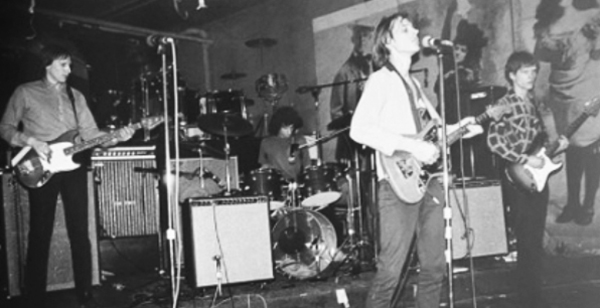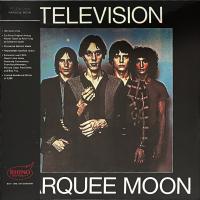Does Rhino High Fidelity’s New AAA 180g 1LP Edition of Television’s Groundbreaking 1977 Debut Album Marquee Moon Finally Deliver the Sonic Punch We’ve All Been Waiting to Hear on Vinyl?
In February 1977, Elektra released Marquee Moon, the debut LP by New York’s groundbreaking art rock group Television that featured the fiery dual-guitar interplay of Tom Verlaine and Richard Lloyd. Then already a buzz band on the burgeoning NY music scene on display nightly at legendary downtown venues like CBGB and Max’s Kansas City, Television’s influential, endlessly inspiring first album was critically acclaimed right from the start — and, to this day, it is often found on many “Essential Albums” lists.
Surprisingly, finding a good-sounding vinyl copy of Marquee Moon has historically been a bit of a challenge for numerous reasons we’ll discuss in a moment. Hopefully, the mixing philosophy behind Rhino’s current Rhino High Fidelity (RHF) series of audiophile-grade remasters, which recently released a limited-edition 180g 1LP version of Marquee Moon, will go a long way to more-than-restoring — or rather, finally delivering — this album to its untethered, uncompromised, uncompressed all-analog glory.
Before we get to the background as to why all this matters, let’s first run down all the genuinely exciting stats underlying this new RHF edition of Marquee Moon. From the official press release, we learn: “To ensure an unrivaled listening experience, all album lacquers are AAA cut directly from the original stereo master tapes by Kevin Gray, while Optimal [in Germany] handles the 180-gram vinyl pressing. The meticulous attention to detail extends to the aesthetic experience, with glossy covers and tip-on jackets reminiscent of vinyl’s golden age.”
The SRP for the 180g 1LP RHF edition of Marquee Moon is $39.98, the limited-edition pressing is capped at 5,000 copies, and it is available exclusively through Rhino.com, which you can go to right here if you want to order a copy for yourself.
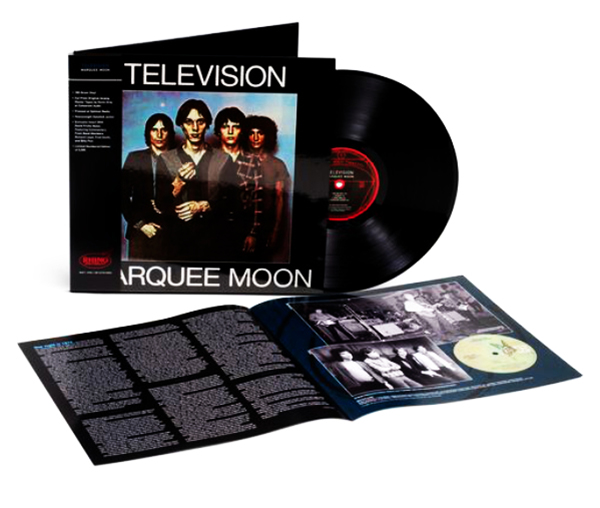
Hearing a sympathetically mastered version of Marquee Moon is, frankly, a dream come true, at least for this writer/fan. While it could be argued — and I know many will do so — that any version of this album is a good one, the reality is that not all versions of it released over the years have sounded all that great, especially from the high-fidelity perspective.
Don’t get me wrong — the music itself is genuinely amazing and timeless, and Marquee Moon is a fantastic album listen from start to finish. It’s a complete statement, and one of the best debut albums by any artist/band of the rock era. But the overall fidelity — and the vinyl pressing quality in particular — often left audiophiles and fellow enthusiasts wondering if Marquee Moon might somehow sound better still. And for me, it always felt like I wasn’t hearing the whole story, and not getting the entire sonic picture the band was trying to paint.
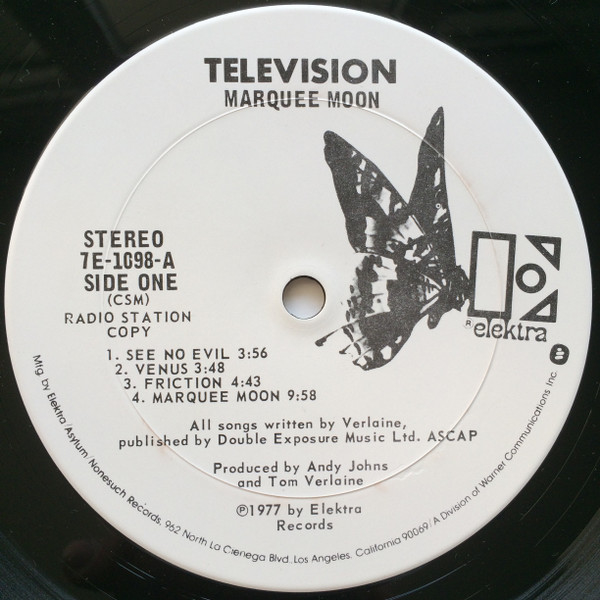
But I always did wind up searching for a better version of it anyway. For example, once somewhat common, white label promotional (WLP) DJ copies were often considered among collectors to be the Holy Grail for the best-sounding versions of Marquee Moon. I am still kicking myself for purging my old WLP when I was moving, as I thought I’d be able to find one again fairly easily, and affordably. Alas, they are now scarce, coveted collectors’ items commanding high prices most anywhere you go. On Discogs, for example, they range from $120 to just under $300.
But do consider this background perspective before you plunk down big bucks for a WLP — in 1977, Elektra was by then just another brand in the massive conglomerate that was dubbed Warner Communications, which also including Asylum and Nonesuch label affiliates as well as Atlantic, Warner Bros. and Reprise-branded releases.
Vinyl pressing quality in this era began to suffer as well, and even with the promo copies I was getting, I was never completely sure if they were a byproduct of the oil crisis of the mid-’70s (oil being a key ingredient in vinyl production, for those of you who may not know) or simply a result of corporate quality controls seeping into the bigger picture. The reality is that 1970s-era albums from many record labels could be a hit-or-miss prospect when it came to fidelity. To that end, I do now remember my old WLP of Marquee Moon had some annoying surface noise issues, especially at the start of each side — which, in retrospect, is probably part of why I let it go, thinking I could eventually do better.
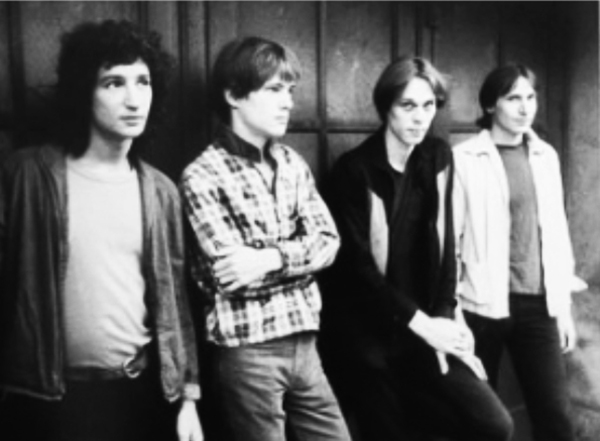
Marquee Moon has, of course, been reissued many times over the years, including other editions from Elektra, Rhino, and 4 Men With Beards. Up until now, those reissues have uniformly been unsatisfying for me. Just last year, I broke down in frustration and bought one of those 2022 Ultra Clear vinyl editions from Rhino, and I found it to be an extra bright, unpleasant listening experience, mostly leaving the music lying flat without delivering much dynamic excitement or detailing coming through.
So what might be the problem here? Since Television emerged out of the then-nascent punk scene in New York, the final mastering for Marquee Moon at the time may have intentionally opted for a bit edgier sound, one a little more brash than most of what was going on, contemporarily speaking. I mean, wasn’t that also part of whole point of the punk and new wave movements to begin with — to shake things up a bit?
It helps to consider the general sonic flavor Marquee Moon in contrast to the more “expensive” sound of popular music being played on the ever-increasingly higher-fidelity FM dial of the day. Synthesizer-driven progressive rock, jazz flavors, and lush mainstream rock and pop ruled the airwaves in 1977, so, set against that sort of backdrop, the overall sound and feel of Marquee Moon certainly cut through the fog with a knife-like edge.
And therein lies the rub. In retrospect, Television’s music arguably had very little to do with punk other than perhaps that defiant spirit of independence. The band’s demos were reportedly produced (at least in part) by Brian Eno, after all! This music was far more introspective, progressive, improvisational, and bluesy than the gabba-gabba-hey assault of most punk offerings. So much so, in fact, it is not surprising that original Television co-founder Richard Hell was pushed out of the group (allowing him to make his own punk masterpiece LP with the Voidoids, Blank Generation, which was issued in September 1977 on another Warner affiliate label, Sire).
Musically, Marquee Moon had more in common with the extended jams Neil Young had been perfecting, both from his days with Buffalo Springfield and on past CSNY, than with the Ramones, Blondie, and Sex Pistols. It didn’t surprise me to read in David Fricke’s liner notes to the new RHF MM reissue that the band even tried to secure Young’s producer David Briggs before going with the notable Led Zeppelin and Rolling Stones engineer-producer Andy Johns.
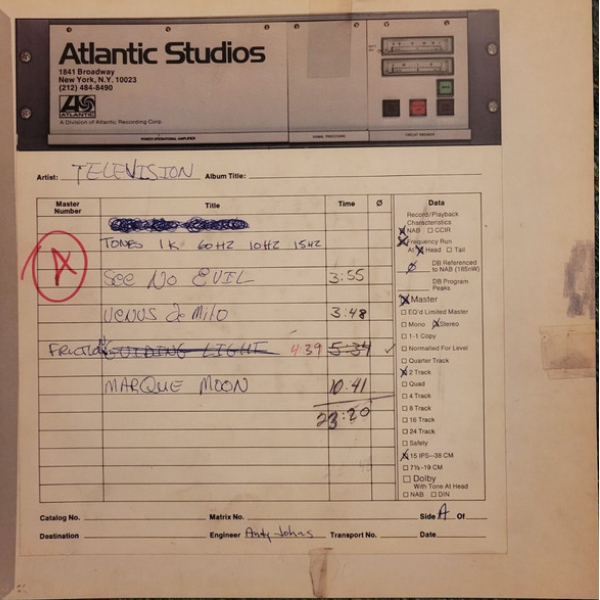
Television’s classic four-piece rock sound on record certainly captured the one-take spirit and the bite of New York, but as I mentioned earlier, to my ear, Marquee Moon was always missing something — as in, the midrange and low-end richness to support those epic solos and progressive-leaning compositions. Fortunately, Rhino’s new RHF edition fulfills that need for a more audiophile-worthy edition of Marquee Moon which now delivers more of what was actually recorded to tape than we’ve heard before.
My RHF copy of Marquee Moon arrived within a week of ordering it from Rhino.com, and after refresher listens to my other copies as well as a hi-rez streaming version of it on Qobuz, from the opening notes of the opener “See No Evil,” I could tell something was very different and very exciting with this new edition! While the original brightness is still in place (the recording is what it is, ultimately), now I’m feeling that long missing and desired richness of sound I found so elusive on earlier versions of the album.
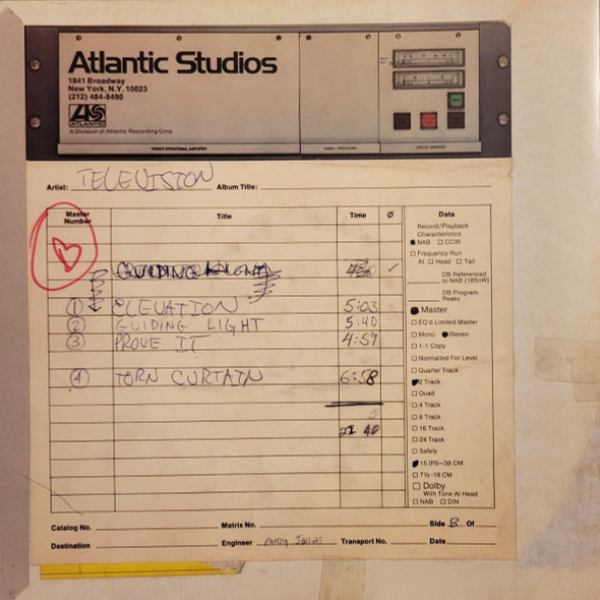
Here, Fred Smith’s bass is super-distinct, especially on tracks like “Venus” (Side 1, Track 3). Billy Ficca’s drums and percussion sparkle now, allowing us to more fully appreciate his Keith Moon-like whirling-dervish fills and flourishes, which are quite apparent on tracks like “Prove It” (Side 2, Track 3), where especially nuanced rim shots, snare-drum rolls, and cymbal crashes resonate very naturally now. Plus, the opening rolls on the album closer “Torn Curtain” (Side 2, Track 4) feel more orchestral. I now get a better sense of the springy twang of Richard Lloyd’s Stratocaster rhythms there, while Tom Verlaine’s solo has never ached quite so soulfully.
The separation between Verlaine and Lloyd’s guitars is almost widescreen cinematic in nature, especially on the epic title track “Marquee Moon” (Side 1, Track 4). I’m hearing amplifier tones and a greater sense of the legendary A&R Recording studios room coming through now — something I never noticed before. In general, I’m hearing more details that were (just speculating here) probably masked by compression and other types of EQ on earlier versions.
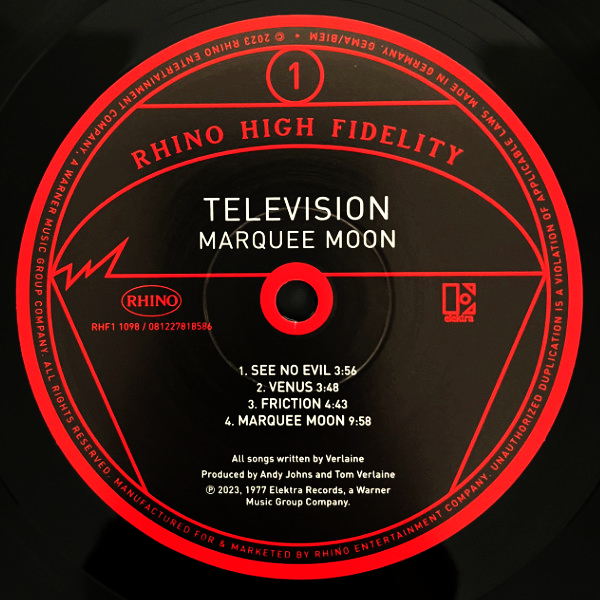
For those who are wondering, this edition of Marquee Moon features the longer, 10:43-ish extended-ending version of the title track, despite the label listing it as the 9:58 version, which was the way it appeared on the original LP. I know that some fans prefer the original’s mysterious fadeout, but I think this incarnation works just great and serves to further define this release as being distinct from the 1977 presentation.
Underscoring the fact that Television was a great live band — these performances were made in one or two takes by four individuals coming together in a recording studio after working hard for year honing their skills as a performing live unit — hearing the title song close with a formal, stage-worthy climax makes much sense from my vantage point.
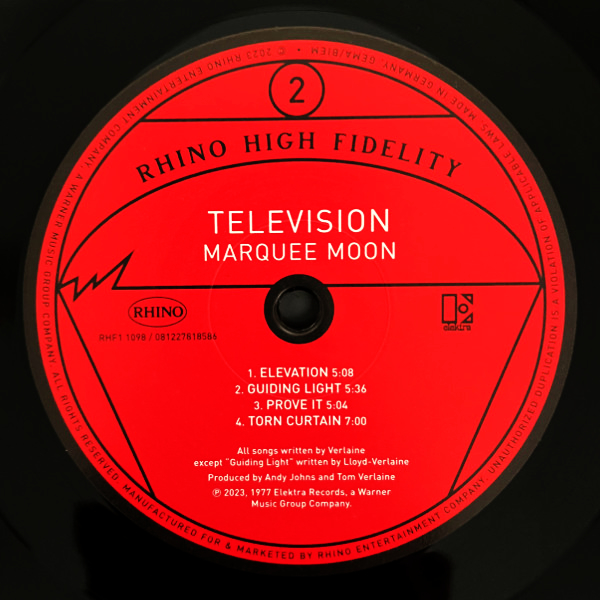
The vinyl pressing quality on this RHF edition — as manufactured at Optimal in Germany — is excellent, delivering a LP that is thick, dark black, and dead-quiet. Kevin Gray’s all-analog mastering from the master tapes strikes a sweet balance between maintaining the irreverent feel of 1977-era new wave and punk, while allowing listeners to hear more of what the band actually laid down in the studio.
The cover design of this RHF edition of Marquee Moon is expanded into a super elegant, double-pocket gatefold. The physical look and feel is more like a vintage laminated-cover jazz album from the 1960s, akin to the style used by present-day editions from Blue Note’s Tone Poet series and Verve’s Acoustic Sounds reissues. RHF has pulled out all the stops and used high-quality old-school sturdy brown tick cardboard for this cover. (I’m pretty sure the original 1977 release was made using thinner white-paper oak tag-type cardboard stock, which was becoming the standard at that time.)
For contrast/perspective, the 4 Men With Beards 2003 edition of Marquee Moon is also a gatefold, but with different pictures inside and more of the fragile, flimsier feel of a European import. (Incidentally, that version also features different liner notes by a friend of mine, Michael Layne Heath, author/editor of the acclaimed Lou Reed interview book My Week Beats Your Year, which is a key reason I’ll be keeping that edition in my collection.)
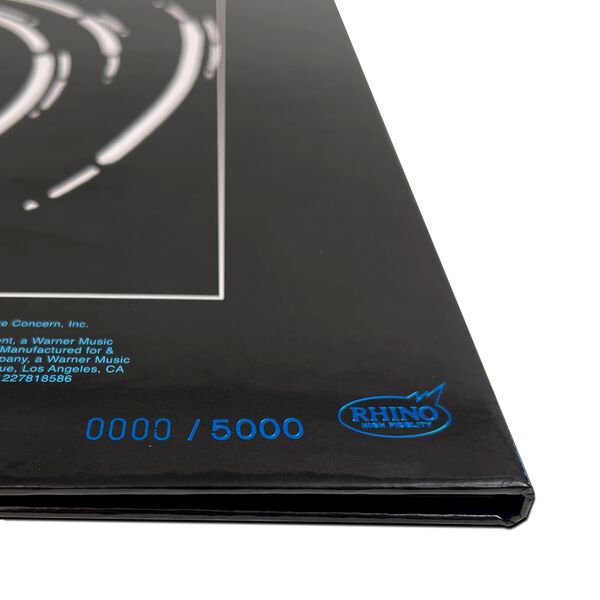
As far as our numerical ratings go here, I’ve pegged the RHF Marquee Moon at an 11 for Music (er, can we go to 12?) and a 9.5 for the Sound (though you may only see it as a 9 in the volume knob graphic at the outset). The only reason I offer that Sound rating at 9.5 instead of a full 10 or even an 11 is that, if there is someday a, say, 45rpm 2LP small batch or UHQR-type edition, that might ratchet the sound quality up even further. (We can dream, right?)
For an album that is so beloved, Rhino High Fidelity, Kevin Gray, and Optimal have certainly delivered here, crafting as near definitive an edition of Television’s Marquee Moon as I’d ever dreamed. Taken in that light, this version is an essential acquisition for fans of this band and this album. While Rhino created a sizable-yet-limited run of 5,000, I would recommend acting and ordering quickly, as I suspect there are at least that many audiophile-oriented Television fans around the world who will want to add this one to their collections ASAP — so get it while you can!
Mark Smotroff is an avid vinyl collector who has also worked in marketing communications for decades. He has reviewed music for AudiophileReview.com, among others, and you can see more of his impressive C.V. at LinkedIn.

TELEVISION
MARQUEE MOON
180g 1LP (Elektra/RHF)
Side 1
1. See No Evil
2. Venus
3. Friction
4. Marquee Moon
Side 2
1. Elevation
2. Guiding Light
3. Prove It
4. Torn Curtain
